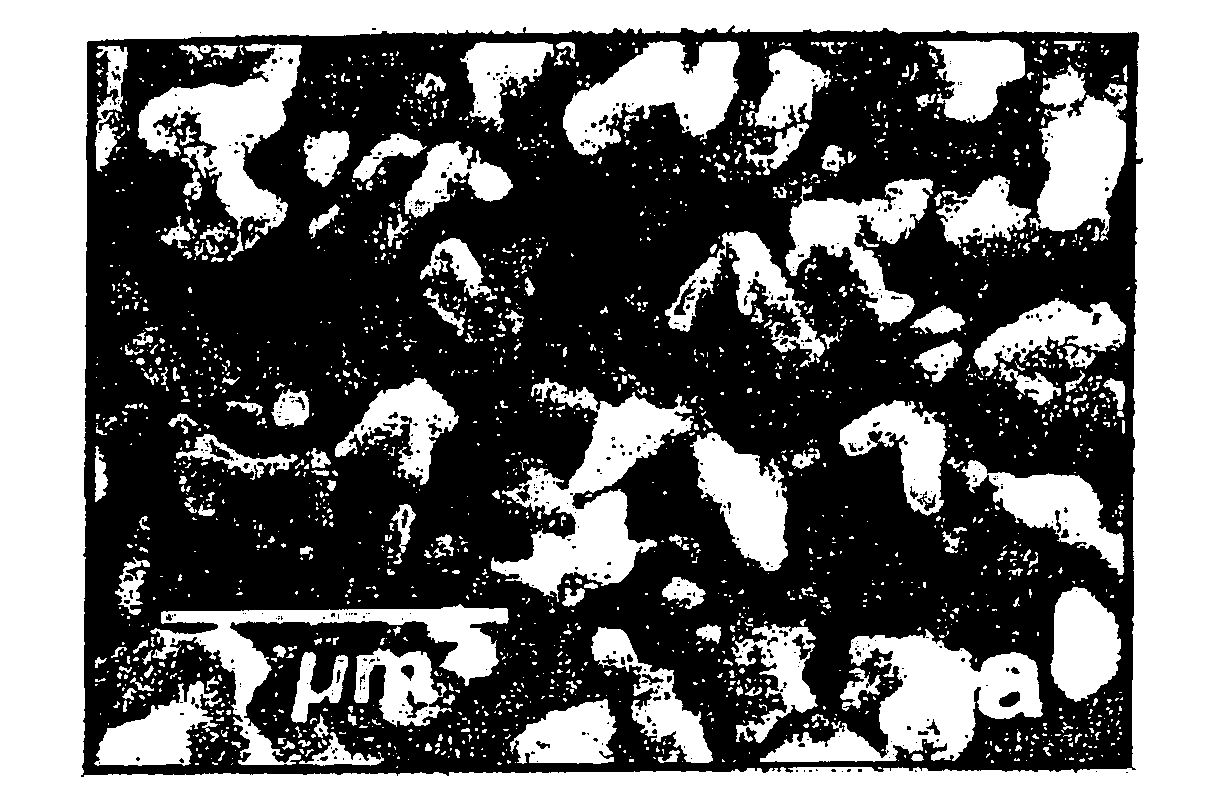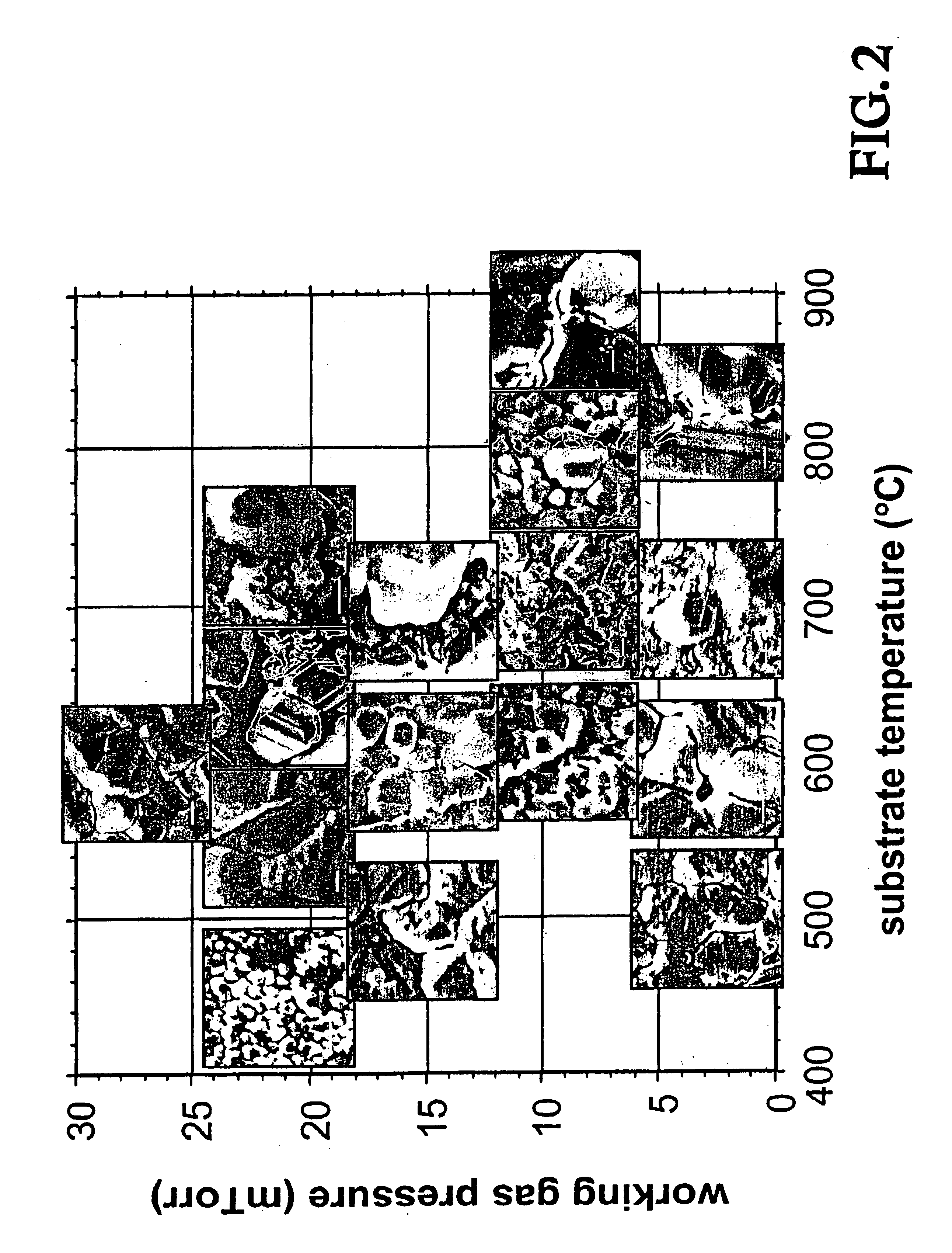Vapor-deposited porous films for energy conversion
a technology of porous films and vapor-deposited films, which is applied in the direction of vacuum evaporation coating, plasma technology, cell components, etc., can solve the problems of toxic byproducts and wastes generated by complex synthesis methods involving gaseous and/or aqueous processes, and the general limited methods of producing conductive porous films
- Summary
- Abstract
- Description
- Claims
- Application Information
AI Technical Summary
Benefits of technology
Problems solved by technology
Method used
Image
Examples
Embodiment Construction
[0016]SOFCs are typically made using components from bulk ceramic powder processing in combination with a synthesis approach of layering the ceramic-metal composite electrode with the electrolyte layer. SOFCs can be operated at temperatures as low as 400° C. or in excess of 1000° C. for high-power output performance. PEMFCs are often made as a laminate of a polymer electrolyte and typically operate below 125° C. In each application, coatings in thin or thick film form can be used for processing both the electrolyte and the electrodes. The use of vapor deposition methods such as sputtering readily accesses a wide range of target compositions to form the electrolyte and / or electrode layers that enhance cell performance.
[0017]A new method to produce metallic films with continuous porosity is described herein that uses vapor deposition processes compatible with high-yield microelectronic processing methods. This new method for processing porous films eliminates the need of post-depositi...
PUM
| Property | Measurement | Unit |
|---|---|---|
| temperatures | aaaaa | aaaaa |
| temperatures | aaaaa | aaaaa |
| porosity | aaaaa | aaaaa |
Abstract
Description
Claims
Application Information
 Login to View More
Login to View More - R&D
- Intellectual Property
- Life Sciences
- Materials
- Tech Scout
- Unparalleled Data Quality
- Higher Quality Content
- 60% Fewer Hallucinations
Browse by: Latest US Patents, China's latest patents, Technical Efficacy Thesaurus, Application Domain, Technology Topic, Popular Technical Reports.
© 2025 PatSnap. All rights reserved.Legal|Privacy policy|Modern Slavery Act Transparency Statement|Sitemap|About US| Contact US: help@patsnap.com



